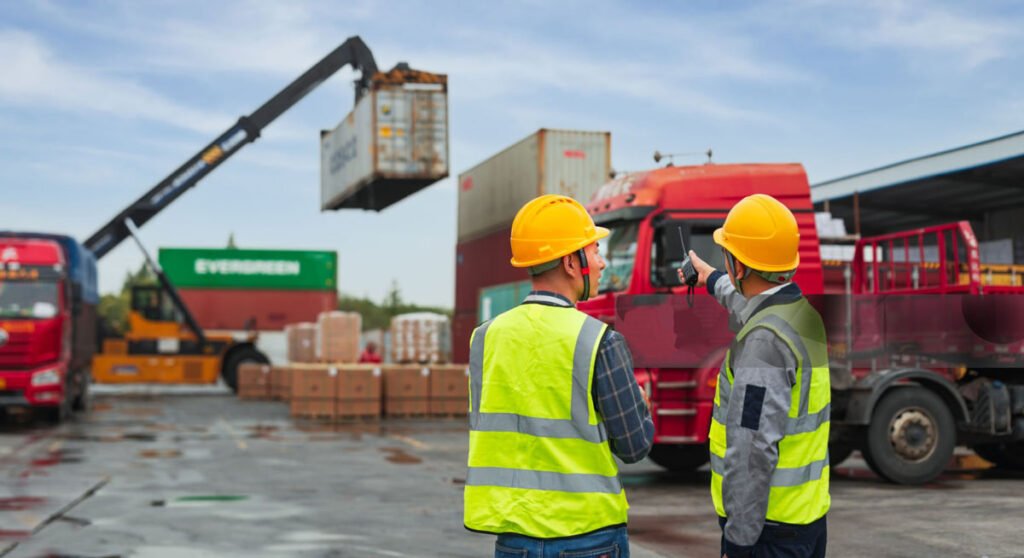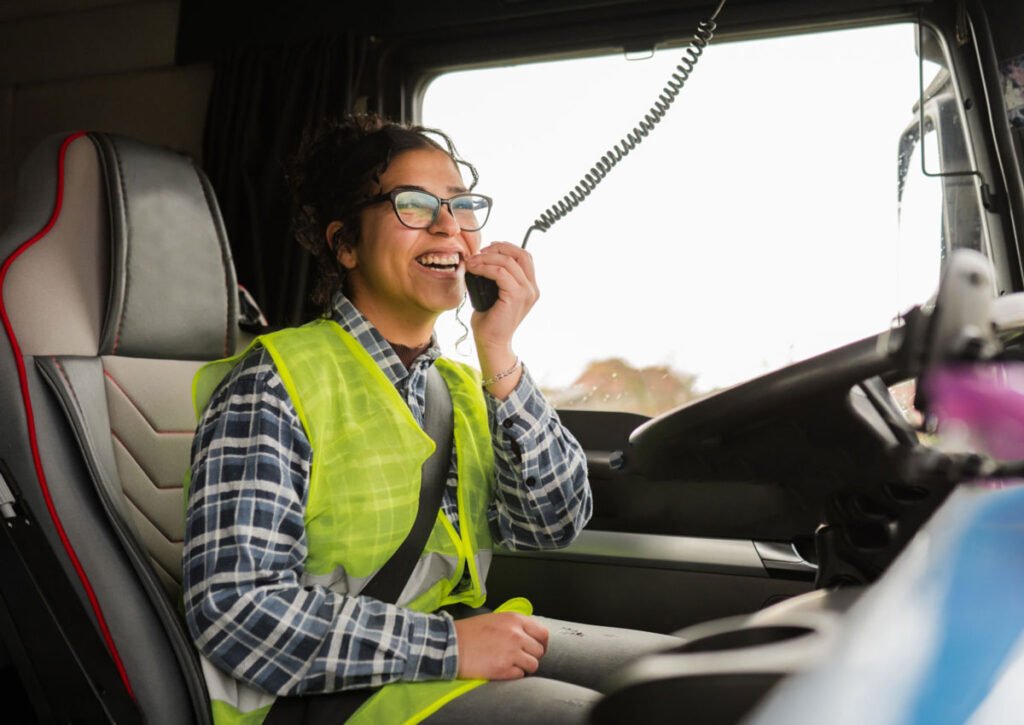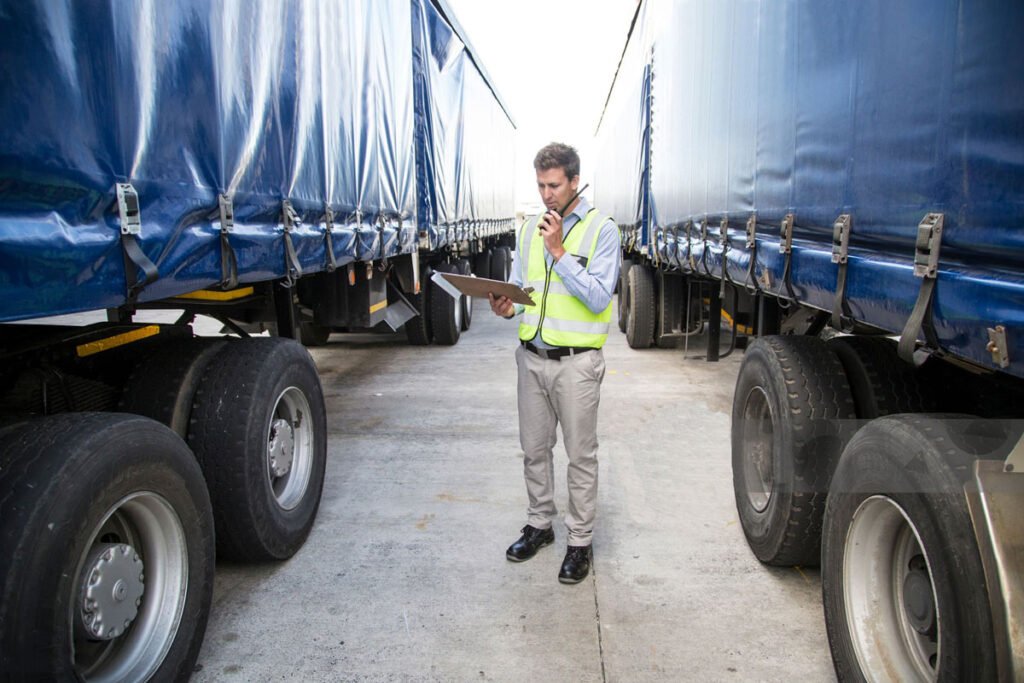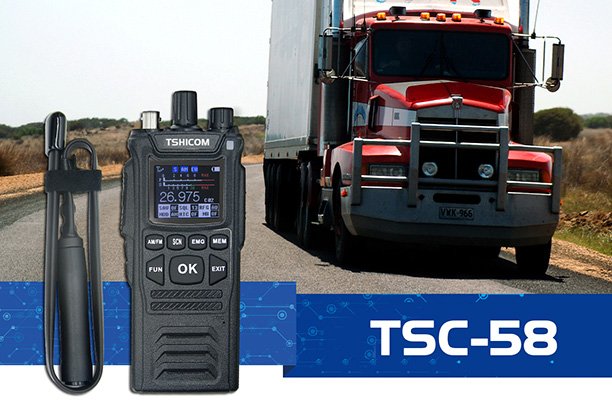Two Way Radio Solution for Transportation and Logistics
Understanding the Transportation and Logistics Industry Landscape

Industry Growth and Technological Dependence
The global transportation and logistics sector is growing exponentially due to increased e-commerce, real-time supply chains, and customer expectations. Operations have become time-critical, digitally managed, and heavily dependent on reliable communication tools.
Communication Complexity in Fleet Management
With distributed fleets, time-sensitive deliveries, and dynamic dispatching, logistics firms need more than just cell phones. They require instant, stable, and structured communication across mobile teams, depots, warehouses, and dispatch centers.
Challenges in Real-World Logistics Communication
Unreliable Mobile Signals in Remote Routes
Mobile networks often fail in industrial parks, rural delivery zones, ports, and highways. Dropouts lead to missed instructions, routing errors, and delayed interventions.
Inefficient Multi-Party Communication
Mobile phones are single-user focused. Group calls require apps, data, and internet access. They lack push-to-talk capabilities and do not support hierarchical dispatch-to-driver communication.
Emergency Situations and Slow Response Times
Delays in driver-dispatch communication during breakdowns or accidents can risk lives and disrupt operations. Cell phones require dialing and waiting, which is inefficient in emergencies.

Key Demands of Modern Logistics Operations
Centralized Command & Dispatch
Fleet operators need a central node to issue real-time commands, monitor location data, and coordinate response across vehicles and facilities.
Real-Time Location and Activity Tracking
Knowing where every vehicle is and what it’s doing—loading, driving, idling—improves routing, fuel economy, and customer satisfaction.
Fast, Clear, Group-Based Communication
Teams need to instantly reach groups (e.g., all drivers on Route 7) or individual units with crystal-clear, noise-resistant voice transmission.
Matching Radio Solutions to Operational Demands
Urban Logistics: High-Density UHF Systems
Urban logistics with buildings and interference benefit from UHF-based systems, which penetrate structures better and offer encrypted digital voice.
Long-Haul Freight: VHF + Satellite-Linked Systems
For rural and intercity trucking, VHF radios combined with GPS and satellite relays ensure connectivity even in cell network dead zones.
Ports & Warehouses: Trunked Radio Networks
Busy hubs require trunked systems with dynamic channel allocation to manage dozens or hundreds of simultaneous users with zero collision.
Strategic System Planning and Deployment Phases
Step 1: Needs Assessment and Site Survey
Conduct audits to map operational zones, headcount, and coverage areas. Understand unique terrain, interference sources, and emergency protocols.
Step 2: System Design (Coverage, Channels, Redundancy)
Design includes choosing frequency bands (UHF/VHF), deciding on number of channels (dispatch, ops, emergencies), and establishing signal redundancy through repeaters.
Step 3: Deployment, Testing, and Training
After installation, system-wide testing ensures coverage and clarity. End-users undergo usage training (PTT, channel switching, emergency use).
Hardware & Components in a Two Way Radio Solution
| Component | Function |
|---|---|
| Mobile Radios | Installed in trucks for long-range, hands-free communication |
| Handheld Radios | Used by ground staff, warehouse managers, and port crews |
| Base Stations & Repeaters | Extend range and manage traffic load |
| Antennas | Mounted on vehicles or buildings for optimized signal |
| Accessories | Earpieces, microphones, battery packs, GPS modules |
Integration with Fleet & Dispatch Management Systems
AVL, Telemetry, and Route Optimization
Advanced Vehicle Location (AVL) integration allows fleet tracking. Telemetry can report engine stats, temperature, or delivery events back to dispatchers in real time.
API Integration with Fleet Software
Digital radios with APIs can sync with TMS (Transport Management Systems), ERP platforms, and GPS tools, making communication part of a larger digital logistics ecosystem.
Choosing the Right Technology (Analog, Digital, DMR, LTE)
Trade-Offs Between Analog and Digital
Analog radios are cost-effective and simple to use but lack scalability and voice clarity over longer distances. Digital radios (like DMR or NXDN) offer:
- Better audio clarity
- Greater coverage range
- Integrated data services (text, GPS, telemetry)
- Enhanced battery efficiency
Digital systems also allow simultaneous voice and data transmission—ideal for dispatch centers needing real-time updates.
Futureproofing with LTE/Wi-Fi Radios
Next-gen radios from providers like Motorola and Hytera are LTE-enabled, combining traditional push-to-talk (PTT) with broadband connectivity. This hybrid model allows:
- Seamless communication over wide geographic areas
- Integration with apps and cloud services
- Wi-Fi fallback in signal-limited buildings
However, LTE radios typically require SIM cards and data subscriptions, introducing ongoing operational costs.

How to Choose a Reliable Solution Provider
Industry Experience and Case Studies
Select a vendor with deep experience in logistics or transportation. Ask for use cases involving similar fleet sizes, terrain, or warehouse operations. Look for:
- Proven deployment in high-demand logistics zones
- Compliance knowledge (FCC licensing, OSHA/DOT)
- Case studies or white papers
After-Sales Support and Maintenance Services
A good provider offers:
- 24/7 technical support
- Spare parts availability
- Firmware updates
- Preventative maintenance plans
This reduces downtime and prolongs equipment life.
Customization, Licensing & Compliance Handling
Your provider should:
- Handle FCC/UHF/VHF licensing paperwork
- Customize channel structures for teams
- Offer managed services (e.g., remote diagnostics, cloud backups)
Cost Breakdown and ROI Analysis
CAPEX (Hardware, Installation, Licensing)
| Item | Typical Cost Range (USD) |
|---|---|
| Mobile Radio Units | $300–$1,000 each |
| Handheld Radios | $150–$700 each |
| Base Station/Repeater | $1,500–$5,000 |
| Accessories & GPS | $50–$200 per unit |
| FCC Licensing | $100–$500 annually (varies by region) |
Total cost will vary by fleet size, number of channels, and coverage needs.
OPEX (Training, Maintenance, Upgrades)
- Training sessions (in-person or online): $500–$1,000
- Maintenance contracts: ~10–15% of hardware cost annually
- Battery replacements: every 2–3 years per unit
- Software upgrades: free with top-tier providers, otherwise $100–$300 per unit
ROI Insight: Most companies break even within 12–18 months due to fuel savings, fewer communication delays, and reduced downtime.
Case Study: Deploying Radios in a 24/7 Regional Logistics Fleet
Problem-Solution Mapping
Company Profile: Mid-sized freight company operating 200 trucks and two warehouses.
Challenges:
- Poor cell coverage in rural areas
- Coordination issues between dock staff and drivers
- Slow emergency response
Solution:
- Digital UHF radios with GPS modules
- Dispatch software with PTT and voice logging
- Warehouse base stations with repeaters for full facility coverage
Results and ROI Within 12 Months
- Delivery efficiency improved by 22%
- Driver idle time reduced by 15%
- Emergency response time cut from 9 mins to under 4 mins
- Full ROI achieved in 11 months
FAQs: Solving Real Concerns in Logistics Communication
1. Can I connect two way radios with my existing fleet management software?
Yes. Most modern digital radios offer APIs or proprietary integrations with dispatch and logistics platforms.
2. Is VHF or UHF better for logistics fleets?
UHF is better for cities and buildings; VHF performs better in open or rural routes. Some operations use both with dual-mode radios.
3. Do I need to hire a radio technician for setup?
Not necessarily. Many providers offer plug-and-play systems and remote support. However, complex setups (e.g., trunked systems or repeaters) may need professional installation.
4. How do radios enhance driver safety?
Radios support one-button emergency calls, man-down alerts, and instant dispatcher contact—far quicker than dialing a phone.
5. Are digital radios secure?
Yes. Digital radios support encryption and private calling, ensuring sensitive route or cargo info remains confidential.
6. Can radios work across multiple cities or states?
Yes, using LTE-enabled radios or linked repeaters over IP networks. However, this may involve licensing, infrastructure, and internet connectivity.
Aligning Two Way Radios with Logistics Evolution
Transportation and logistics firms face relentless demands—faster deliveries, safer operations, and leaner costs. A modern two way radio solution for transportation and logistics aligns perfectly with these needs, offering instant, scalable, and reliable communication across all operational layers.
Whether you’re managing a cross-country freight operation or a local delivery fleet, investing in a smart radio system boosts coordination, safety, and customer satisfaction. With the right planning, hardware, and provider, the path to operational excellence becomes clearer—and faster to reach.
Take Action Now to Upgrade Your Logistics Communication System!
Is your transportation or logistics operation struggling with poor communication, coordination delays, or slow emergency response? Now is the perfect time to transform your fleet communications with a customized two way radio solution for transportation and logistics.
📦 Whether you manage a nationwide fleet or operate a local distribution network, we can help you:
- Improve dispatch efficiency
- Reduce operating costs
- Enhance driver and staff safety
- Achieve seamless communication across regions
👉 Fill out the form below to schedule a one-on-one consultation, receive a tailored system assessment, and get a free quote.

